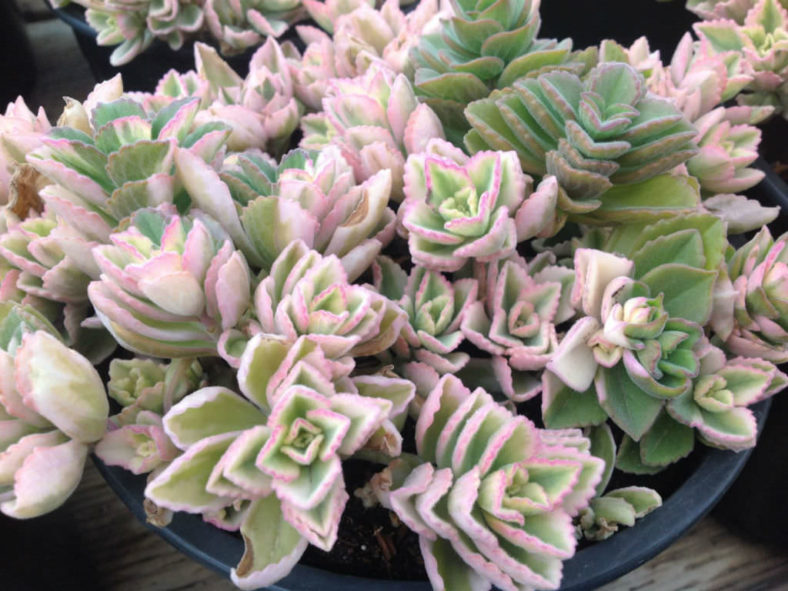Plectranthus is a genus of about 350 species of annuals, evergreen perennials, semi-succulents, and shrubs from Africa, Madagascar, Asia, Australasia, and the Pacific Islands. They can grow in a cool greenhouse or outdoors in hanging baskets, containers, or sunny borders. The foliage is often ornamental, with decorative margins and a fuzzy appearance. Flowers are small but usually borne in good-size racemes of tubular 2-lipped flowers in shades of purple, pink, white, or blue.
Growing Conditions and General Care
Plectranthus are easily cultivated and require little extra attention or special treatment. They enjoy well-composted soil and thrive in semi-shade. These plants are ideally suited to grow under the shade of trees. They are generally shallow-rooted and enjoy adequate water, but store water in their stems and resist prolonged periods of drought. Plectranthus are often grown for their attractive foliage, flowers, or both, and vary in their growth forms from dense prostrate ground covers to subshrubs and large shrubs.

Although they are frost tender, Plectranthus are usually grown in shady, protected places and, as such, are afforded some protection from frost. Frost does not affect flowering because they all flower at the end of the growing season. Once the plants have been established for a year or more, they become woody at the base and are more resistant to frost damage.
Most shrubby species make better, denser, and more attractive shrubs if they are pruned back to between 1/3 and 1/4 of their height at the end of winter before the new growth begins for summer. After pruning, it is an ideal time to dress the soil with a thick layer of compost or organic mulch and apply a balanced fertilizer, such as 2:3:2. Ground cover species rarely need to be pruned, except for the occasional removal of old growth and flower spikes.
The ground cover species often have beautiful foliage and form dense, attractive carpets, from 6 to 18 inches (15 to 45 cm) thick, which burst into flower in fall. These plants root readily at the nodes wherever they touch the ground and will form dense mats relatively quickly.
Shrubby species vary in height from 20 inches to 6.67 feet (0.5 to 2 m) and can be planted en masse or as single individuals. Once again, most species enjoy the shade, but few can endure the full sun.
Propagation
Plectranthus are exceptionally easy to propagate and grow with little special treatment. Most propagation is done from cuttings during the early summer and spring. Although the cuttings will root at any time of the year, they have a long summer ahead to establish if they are propagated at this time. Cuttings may take the form of softwood or semi-hardwood, but tip cuttings are usually the best.
The cuttings should have at least two nodes, and the leaves should be removed from the lower portion. Rooting hormone is usually unnecessary and has been known to cause the cuttings to rot. The cuttings should be inserted one-third of their length into clean, double-washed river sand, kept in a warm, shady place, and not allowed to dry out.
Source: pza.sanbi.org
Links
- Back to genus Plectranthus
- Succupedia: Browse succulents by Scientific Name, Common Name, Genus, Family, USDA Hardiness Zone, Origin, or cacti by Genus